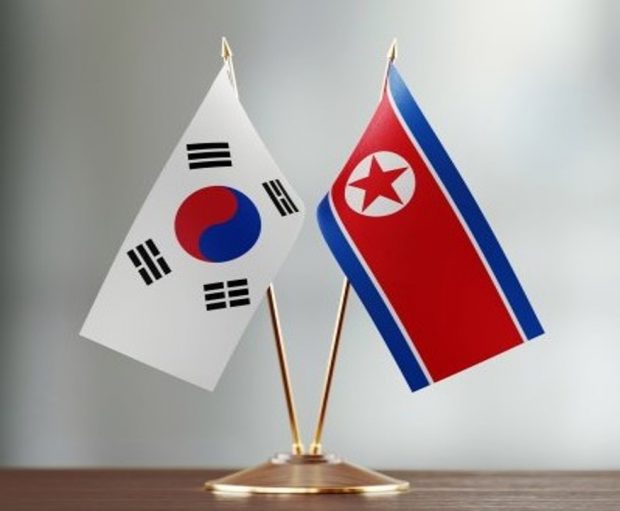Weaving peace on the Korean Peninsula – A media perspective

By Eddy Suprapto
Contributor to AsiaN
JAKARTA: In the last five years, world governance has gone into uncertainty. Starting from the economic trade war between the USA and China to the border disputes and the threats of the Covid-19 pandemic.
In his book “Stabilizing an Unstable Economy”, Professor Hyman Minsky’s thinking is relevant because the current mainstream of thought has assumed that the instability of the financial sector stems from factors outside the sector. In fact, the instability of the financial sector is caused by the basic behavior of the players in the market and which is speculative.
The problem is becoming increasingly complicated by the instability of world leaders. So that the tug of war for peace is getting longer. Peace efforts in conflict areas have become luxury items that drag on without any resolution.
This is reflected in the case of peace on the Korean peninsula. The idea of peace began with President Donald Trump’s meeting with North Korean leader Kim Jong Un in Singapore on 12 June 2018 and continued at a high-level conference on 27 February 2019.
Although there were two high-level meetings, there were no significant results for peace on the Korean Peninsula. Judging from this impasse, it is time for the media to play a bigger role.
The role of the media in conflict areas
In the cultural development of a country, the role of the media is very important. Media is an agent of change in solving world problems, including creating peace and reducing poverty. Media can contribute to world civilization, especially with the development of information technology. The media plays a key role. The creation of world peace is high on the duties of the media.
The strategic role of the media in peace is certainly not straightforward due to internal challenges. The digital era makes competition between media very fierce. No wonder there is a trend of unhealthy competition between media. So that the emergence of a bombastic, speculative and provocative media spread in the community. Media like this, apart from not providing nutritional knowledge for the public, also tends to heat up the atmosphere.
It is time for the media to be objective, to present facts and to carry out fact checks so that the peaceful face of news is always available to the public. Media coverage must always be responsible, especially in conflict areas.
Even though in reality we encounter provocative issues, fake news (hoax), and various negative contents, public consumed, which often create conflicts, and even widespread conflicts in society.
The emergence of provocative media was fueled by certain groups who wanted to spread sensation with bombastic titles in order to attract the attention of readers and make profits. As a result, society is dragged into a flow of unhealthy perspectives, into hot dark puddles, full of prejudice and hatred for others, and often leads to conflicts, even violence and division.
Seeing this problem, the peaceful journalism approach is very relevant and should be widely practiced. John Galtung formulates peaceful journalism that aims to avoid or prevent violence in society. This approach has the principle of framing the report of an incident to be broader, more balanced, and more accurately based on information about conflicts and changes that occur by directing the delivery of information that has an impact on peace.
Peace Initiative
In the 67 years since the end of the Korean War, namely the ceasefire agreement on July 27, 1953, the Korean nation has been split into two countries. During the ceasefire process, peace initiatives were always carried out by the government and politicians and involved major countries such as the US, China and Japan. Peace initiatives may need to be tried out of community needs.
The first way of peace is that reunification efforts need to be revived. Meeting separate families without political content but having humanitarian and kinship weight should be tried. Basically, one Korea is a common home for the Korean people. Reunification meetings can be done through Chuseok Day. This reunification effort needs to be carried out and become a national awareness and in the end it will be held by forming a people to people forum such as a peace conference by the Korean people.
The second way of peace is taking cultural actions. The Korean nation has the same cultural roots. This makes it very easy to have a cultural dialogue between South and North Korea. Starting from classical cultural exchanges, cooperation can make classic film productions together between South Korean and North Korean filmmakers. There can be pop culture exchanges such as the Blackpink concert in North Korea’s capital Pyongyang or Boy Band concerts like Bangtan Sonyeondan or more popular BTS. You can imagine if Blackpink or BTS had a concert in Pyongyang, the possibility of peace would be realized faster than a politicians’ summit.
The third way of peace can be strengthened by sports cooperation. As we all know Chairman Kim Yong Un really likes basketball. There is nothing wrong with a visit by the South Korean basketball team to the North Korean team.
In the field of football, both countries have star players who play in European championships and in other countries. If peace between China and America was through ping pong, why not try peace between North and South Korea through sports diplomacy?
Obviously, there is an urgent need to think of new ideas and adopt novel ways towards reunification. The old conservative way is no longer valid in the 21st century, the Century of Reunification.
The media can help in this new context through an intense peaceful journalism that promotes peace in all its forms and rejects all the attempts to fuel conflicts and disputes or keep the status-quo, depriving the people in the two countries to become closer and be reunited after so many decades of separtion.





















































